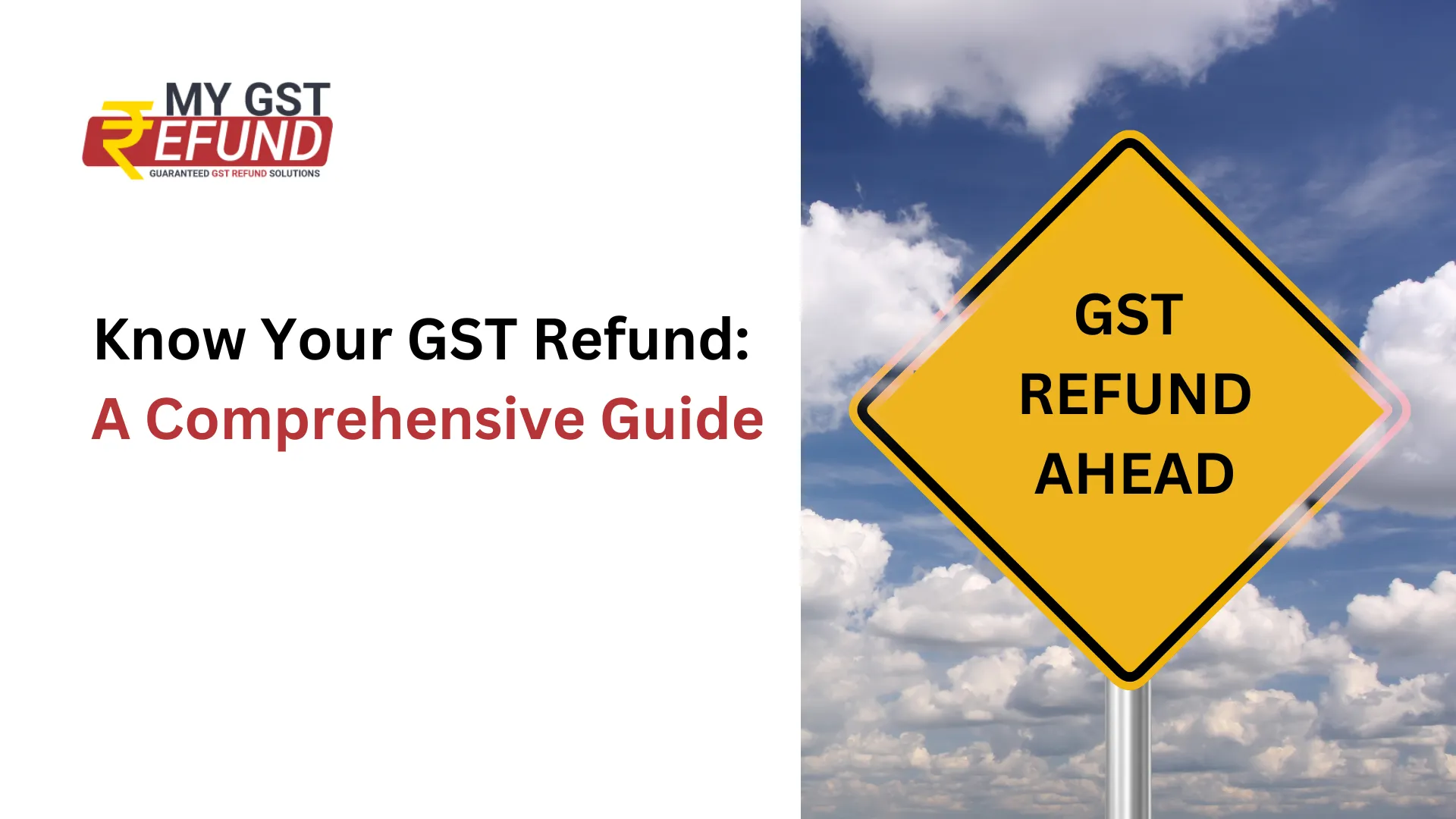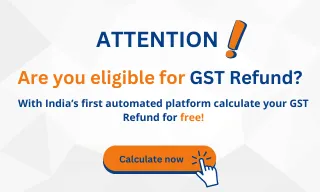Know Your GST Refund: A Comprehensive Guide
Published on: Mon Apr 01 2024
Bio (Reveal/Hide)

Know Your GST Refund: A Comprehensive Guide
Who is Eligible for a GST Refund?
Several categories of businesses can claim GST refunds:
1-Exporters: Businesses exporting goods or services can claim a refund of the Integrated GST (IGST) paid.
2-Businesses with unutilized ITC: If the ITC accumulated exceeds the GST liability in a tax period, businesses can claim a refund for the difference.
3-Businesses making zero-rated supplies: Certain supplies like exports and sales to Special Economic Zones (SEZs) are zero-rated, meaning no GST is levied. Businesses supplying these can claim a refund of any GST paid on inputs.
4-Cases of excess tax payment: If a business mistakenly pays more GST than due, they can claim a refund.
Know your GST Refund Eligibility through MY GST REFUND . The MY GST REFUND offers a helpful tool called "Know Your GST Refund "to shed light on this very question. This segment guides you through a series of questions designed to assess your eligibility for various GST refund schemes. The "Know Your GST Refund" tool uses a simple question-and-answer format to understand your business activities.
Where Can You Claim a GST Refund?
GST refund applications are filed electronically on the GST Portal . The portal offers a dedicated section for managing refund claims.
Knowing Your GST Refund Status through the GST Portal
There are two ways to check your GST refund status on the GST portal:
1 . Using the Application Reference Number (ARN): If you have the ARN, you can track your application without logging in. Visit the GST portal . Go to 'Services' -> 'Refunds' -> 'Track Application Status'.Enter the ARN and click on 'Search'.The status of your application will be displayed. Using the Filing Year:
2. You can also track the status for a specific year by logging in to your GST account. Login to the GST portal using your credentials. Navigate to 'Services' -> 'Refunds' -> 'Track Application Status'.Select 'Refund' from the 'Module' dropdown list. Choose the 'Filing Year' from the dropdown and click 'Search'.You will see a list of applications for that year.
The status will be color-coded to indicate the current stage of your application. You can also view additional details like tax period and claimed amount by logging in.
Documents Required for GST Refund Claims
You'll need supporting documents to substantiate your claim when filing a refund claim. These documents typically include:
Invoices for purchases (for claiming ITC)Shipping bills (for export refunds)Proof of tax payment bank account details for receiving the refund
Steps to Know Your Business Eligibility for a GST Refund
Here's a breakdown of the steps to know your business eligibility for a GST refund, primarily using the official GST portal (https://www.gst.gov.in/):
1. Access Your GST Return Filing Details:
Login to the GST portal using your credentials. Go to the "Returns" section. Select the relevant tax period for which you suspect you might be eligible for a refund. Download the filed GST return (GSTR-3B or GSTR-9).
2. Analyze Input Tax Credit (ITC) and Tax Liability:
In the downloaded return, review the sections related to ITC claimed and total tax liability (tax paid + tax payable). Focus on these key points:
ITC: This is the tax credit you can claim on purchases made for your business.Tax Liability: This is the total GST you owe on your sales in that tax period.
3. Identify Potential Refund Scenarios:
Compare the ITC and tax liability values:
Unutilized ITC: If the ITC claimed is higher than your tax liability, you might be eligible for a refund for the difference. This scenario arises due to an inverted duty structure (tax paid on purchases is higher than tax collected on sales).
Zero-Rated Supplies: If you made zero-rated supplies (exports, SEZ sales) and claimed ITC on related purchases, you might be eligible for a refund of that ITC.
4. Additional Considerations (Optional):
Review other sections of the return, like "tax payment details," to ensure you haven't made any excess payments.Explore the "Refunds" section on the portal for more specific information and eligibility criteria.
Time Limit for Claiming Refunds
There's generally a two-year time limit for claiming GST refund applications. It's important to file your application within two years from the relevant tax period to be eligible for a refund.
By understanding these details and utilizing the available resources, you can effectively claim your rightful GST refunds and optimize your cash flow within the GST framework. Remember, for complex cases or if you're unsure about your eligibility, consider seeking guidance from a tax professional specializing in GST.
Related Posts






